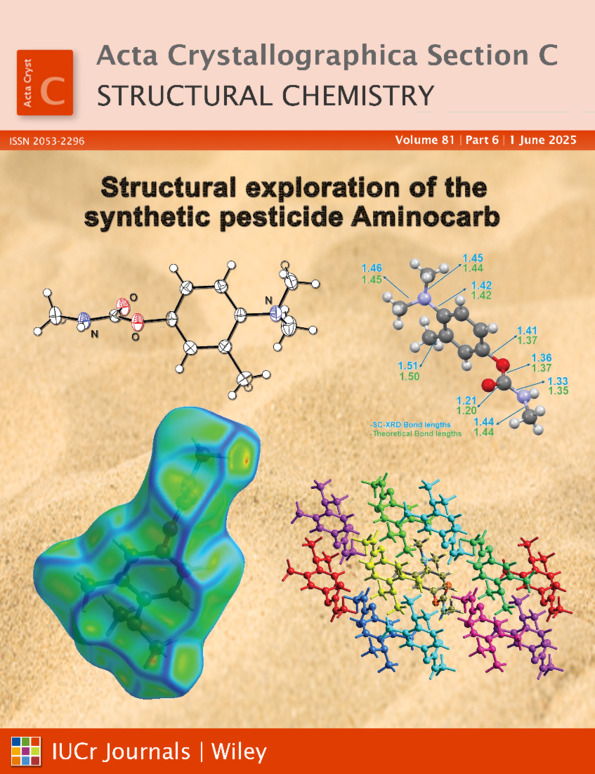Synthesis and crystal structures of a family of bimetallic complexes with phenyl-substituted bridging tetraoxolene ligands
Abstract
Seven dinuclear metal complexes and one trinuclear metal complex have been synthesized using the redox-active diphenyl-substituted tetraoxolene 2,5-dihydroxy-3,6-diphenyl-1,4-benzoquinone (H2Ph2dhbq, C18H12O4) as a bridging ligand and tris[(pyridin-2-yl)methyl]amine (TPA, C18H18N4) as a tetradentate terminal ligand. Single-crystal X-ray diffraction data confirm the final redox states of all components, revealing both expected and unexpected redox behavior across the eight reported complexes. Metal complexes with the formula [MII2(Ph2dhbq2−)(TPA)2]2+ can be synthesized from Mn, Fe, Co, Ni, Zn, and Ru, using either the oxidized ligand H2Ph2dhbq or a combination of the reduced ligand H4Ph2dhbq and an in-situ oxidant. Additionally, switching to Group 13 elements, such as Ga, facilitates the formation of the related [MIII2(Ph2dhbq4−)(TPA)2]2+ complex, wherein the ligand remains in its initial reduced state.




